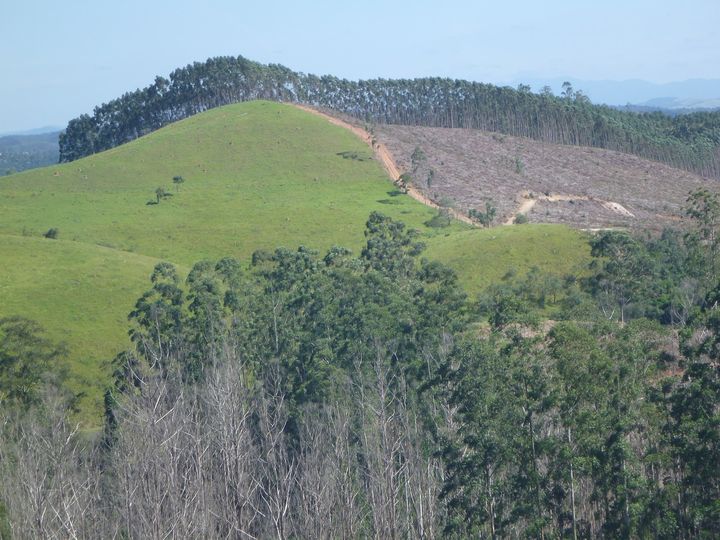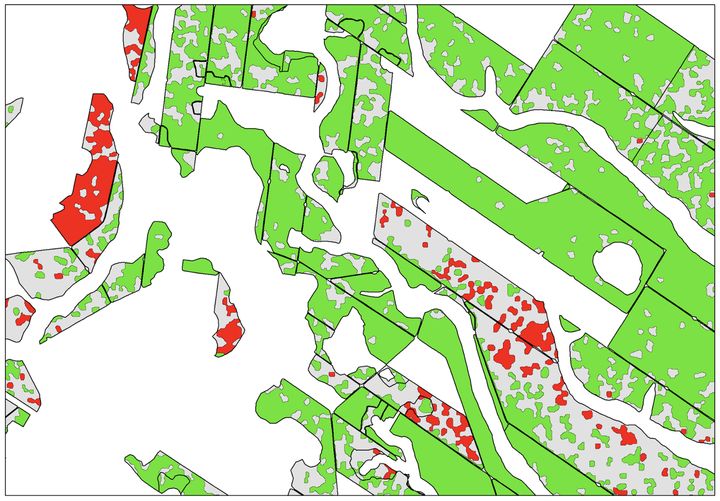Some might say that an image is worth a thousand words. Yet words aren’t enough when it comes to analyzing massive amounts of satellite images of earth from hundreds of miles away (drones, move aside).
Geospatial data, rather than words, is needed more than ever to manage proactively large-scale assets at global and regional levels. In other words, AI is now being applied by a small number of innovative companies to analyze, monitor and manage natural resources - a trend that is sure to grow in the coming years.
PlanetWatchers is one of the few companies that is leveraging AI and multi-source satellite sensors to help enterprises, governments and NGOs monitor their natural resources across multiple sectors. PlanetWatchers’ SaaS solution provides critical information that can help monitor patterns of drought, pests, disease and other elements impacting the earth.
Founded by Roi Shilo and Ariel Smoliar, the idea for PlanetWatchers came to being when the two met back in 2006. Ariel was serving in the Israeli National Geospatial-Intelligence Agency (NGA) and Roi was conducting research at the Earth and Planetary Image Facility (under the supervision of Prof. Dan Blumberg, a world expert in radar imaging).

PlanetWatchers detects forest disturbances, monitors growth and tracks harvesting operations under any weather conditions and terrain.
10 years later, PlanetWatchers was founded. Roi and Ariel’s experience has allowed them to understand the value of merging the capabilities of image processing and remote sensing to scan large distributed areas to detect anomalies over time. Back in 2006, military analysts were validating the results. Now, PlanetWatchers is leveraging cloud computing and AI to automate natural resource management.
I had the pleasure of sitting down with Roi and Ariel to learn more about the technology behind PlanetWatchers and how this is being applied to help better understand the impact of human actions on the earth.
Q: PlanetWatchers has created a geospatial technology to manage large scale assets such as forestry, oil and gas infrastructures and supply chains. How did you come up with the idea for this and what assets do you currently help manage?
Roi: Satellite imagery is in our DNA. Over ten years ago, Ariel and I delivered actionable insights to end users in the military and all the processing was done manually. At PlanetWatchers, we are focusing on making a global impact by building a cloud-based data pipeline. This automates satellite-data processing to help operations’ teams located anywhere (no matter the weather conditions and the complexity of the terrain) manage, protect and save natural resources.
There have also been a number of companies in the satellite imagery analytics space created by industry generalists that focus on satellite data aggregation and analysis. At PlanetWatchers, however, we focus on solving specific vertical pain points.
Ariel: Our technology is at its best when monitoring assets that are spread across hundreds of thousands, if not millions, of acres. We can detect anomalies - such as pest damage, irregular growth trends, land-use changes and more - in the forestry, energy (pipeline leakages, for example), agriculture and other resource industries.
For example, our technology is used by some of the world’s largest forestry management companies. Our approach is to monitor their geographically distributed assets to provide our customers (commercial forestry owners) with better visibility and control. We believe that companies should be informed, make decisions and respond to physical changes in their assets faster, which is what our proactive monitoring approach allows.
Q: How is PlanetWatchers using AI to manage natural resources?
Roi: Matching AI with multi-source geospatial information with the specific challenges of our customers, who are managing physical assets totalling up to millions of acres each, is actually one of our key strengths.
We spend most of our time creating the right set of algorithms and then leveraging our close relationships with owners of vast natural resources to provide a feedback loop. This ensures that our algorithms can teach themselves how to improve as time goes on. We’re building one of the strongest teams in the industry, based on expertise from across the military, commercial and academic worlds to leverage AI to manage natural resources.

PlanetWatchers analysis of crop growth over time. The colors indicate growth rates. Green shows areas with good growing rates, gray indicates areas with lower growth and red shows areas that have suffered significant damage and require further operational actions. PlanetWatchers’ technology enables monitoring areas much larger than this example, in all weather conditions in predefined intervals.
Q: What benefits does PlanetWatchers provide that drones do not?
Roi: We see our platform as a first layer in tackling our customers’ major challenges. Through our proprietary analysis of remotely sensed data (such as satellite output), we are able to detect and filter out minor problems, and then highlight significant anomalies that need a closer look via higher resolution images from sources such as drones.
For example, after using satellites to monitor hundreds of thousands of forestry acres, we identified multiple areas with lower growth than expected, each that are no more than one-thousand acres long. The next layer of investigation may supply additional information about the source of the problem and support relevant operational reaction. A drone can capture each one of these areas within a day’s work, but it would take a drone months to cover one-hundred thousand acres, in addition to being very costly. A better approach would be to deploy a drone directly to the relevant location and provide very high resolution of the area, as this may help determine the cause for a lower yield and support a timely response.
Ariel: Consider this example similar to a first scan with a General Practitioner, which later leads to a specialist - who is expensive and needs to be booked well in advance. If you went to a specialist every time you had a headache, you’d probably go bankrupt! Our technology detects the minor problems first and then we use drones to take a closer look to determine what is needed to move forward.
Q: Do you think PlanetWatchers will help solve the problem of global warming in the future? If so, how?
Roi: Global Warming is definitely one of the great challenges that we are currently facing. Several activities have been linked to global warming, such as emissions of greenhouse gases, deforestation or removal of critical vegetation.
Our technology can provide a cost-effective and powerful way to deal with these drivers of global warming through detection of deforestation and industrial infrastructure changes that increase the emission of greenhouse gases. We can also show early warnings of the impacts of climate change by providing information on soil moisture and droughts.
Q: In terms of natural resource management, what do you see as the greatest value PlanetWatchers can bring?
Ariel: We relentlessly pursue our vision to make a global impact and help our customers better manage their natural resources. Each time we introduce a new machine-learning algorithm, we validate the results in the field at any point on the planet to make sure our customers can improve their workflow and react faster to mitigate disturbances.
Q: The satellite imagery analytics space seems to be gaining more attention with recent investments. What is unique about PlanetWatchers’ value proposition?
Roi: The “New Space” revolution means that more and more data is going to be provided for any point on earth. This trend is growing exponentially and PlanetWatchers’ imagery analytics capabilities quickly transforms these big volumes of frequent data into useful information.
This information revolutionizes the way our customers control and manage their natural resources and other large-scale assets. We are working directly with large companies to increase productivity, as well as to reduce damage. We see great business potential that is aligned with an important mission to create a global, positive impact on the environment and the people that rely on it for their livelihoods.
Q: What is your vision of satellite data analytics as drivers for the future?
Ariel: We believe that this is just the beginning. In the near future, we will be able to analyze the rich time-series data we’ve collected to help our customers increase their yield. This can be achieved by analyzing massive amounts of satellite data over a period of time, which can measure growth of crops, for example. This information is then combined with other sources of data such as the type of genetics, age, topography, soil and weather and other operational activities like fertilization and weed spraying, to establish best practices that will result in higher forest productivity.
